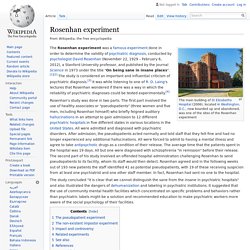

Defense Mechanisms. Brain on Religion. Principles of NeurotheologyBy Andrew B.

NewbergPaperback, 284 pagesAshgateList price: $29.95 "Neurotheology" is a unique field of scholarship and investigation that seeks to understand the relationship specifically between the brain and theology, and more broadly between the mind and religion. As a topic, neurotheology has garnered substantial attention in the academic and lay communities in recent years. Several books have been written addressing the relationship between the brain and religious experience and numerous scholarly articles have been published on the topic.
The scientific and religious communities have been very interested in obtaining more information regarding neurotheology, how to approach this topic, and whether science and religion can be integrated in some manner that preserves, and perhaps enhances, both. In short, for neurotheology to be successful, science must be kept rigorous and religion must be kept religious. Future Predicted. Later today you are going to do something, something you don't know about yet.

Yet somehow, it's already happened. Somehow, it's already affected you. Huh? One of the most respected, senior and widely published professors of psychology, Daryl Bem of Cornell, has just published an article that suggests that people — ordinary people — can be altered by experiences they haven't had yet. Time, he suggests, is leaking. Already critics are jumping up and down, saying this can't be, time is not porous, the experiments are flawed. Two Very Queer Experiments But while we're waiting, let me tell you what he did. Dr. Experiment Number 1: Who's Got the Porn? The first is a computer quiz. 100 Cornell students, 50 males, 50 females, were invited to sit in front of some computers. This is an experiment that tests for ESP. OK, that's two curtains. Since a computer randomly chooses what's behind each curtain, one would expect the students to choose correctly half the time.
Loner Guide. Miina Matsuoka lives by herself in New York City.

She owns two cats and routinely screens her calls. But before you jump to conclusions, note that she is comfortable hobnobbing in any of five languages for her job as business manager at an international lighting-design firm. She just strongly prefers not to socialize , opting instead for long baths, DVDs, and immersion in her art projects. She does have good, close friends, and goes dancing about once a month, but afterward feels a strong need to "hide and recoup. " In our society, where extroverts make up three-quarters of the population, loners (except Henry David Thoreau) are pegged as creepy or pathetic. Loners often hear from well-meaning peers that they need to be more social, but the implication that they're merely black-and-white opposites of their bubbly peers misses the point. Contrary to popular belief, not all loners have a pathological fear of social contact. Solitary Pleasures.
Rosenhan Experiment. Rosenhan's study was done in two parts.

The first part involved the use of healthy associates or "pseudopatients" (three women and five men, including Rosenhan himself) who briefly feigned auditory hallucinations in an attempt to gain admission to 12 different psychiatric hospitals in five different states in various locations in the United States. All were admitted and diagnosed with psychiatric disorders. After admission, the pseudopatients acted normally and told staff that they felt fine and had no longer experienced any additional hallucinations. All were forced to admit to having a mental illness and agree to take antipsychotic drugs as a condition of their release.
The average time that the patients spent in the hospital was 19 days. The study concluded "it is clear that we cannot distinguish the sane from the insane in psychiatric hospitals" and also illustrated the dangers of dehumanization and labeling in psychiatric institutions. The pseudopatient experiment[edit] Notes. Bizarre Experiments. By Megan Wilde 1.

The Real World: Mental Hospital Edition This is the true story of three schizophrenics, who all believed they were Jesus Christ. It wasn’t long before they stopped being polite and started getting real crazy. In 1959, social psychologist Milton Rokeach wanted to test the strength of self-delusion. Rokeach hoped the Christs would give up their delusional identities after confronting others who claimed to be the same person. Unable to turn the other cheek, the three Christs often argued until punches were thrown. But the behavior of the schizophrenics isn’t even the most bizarre part. As part of the experiment, the psychologist wanted to see just how entrenched each man’s delusions were. At the end of their two-year stay, each man still believed he was the one and only son of God. Ethics.